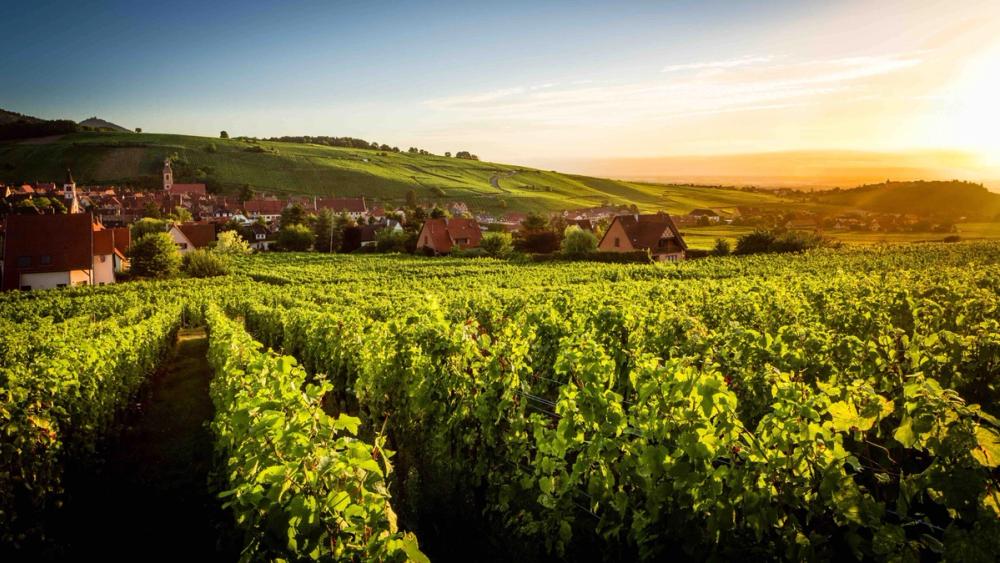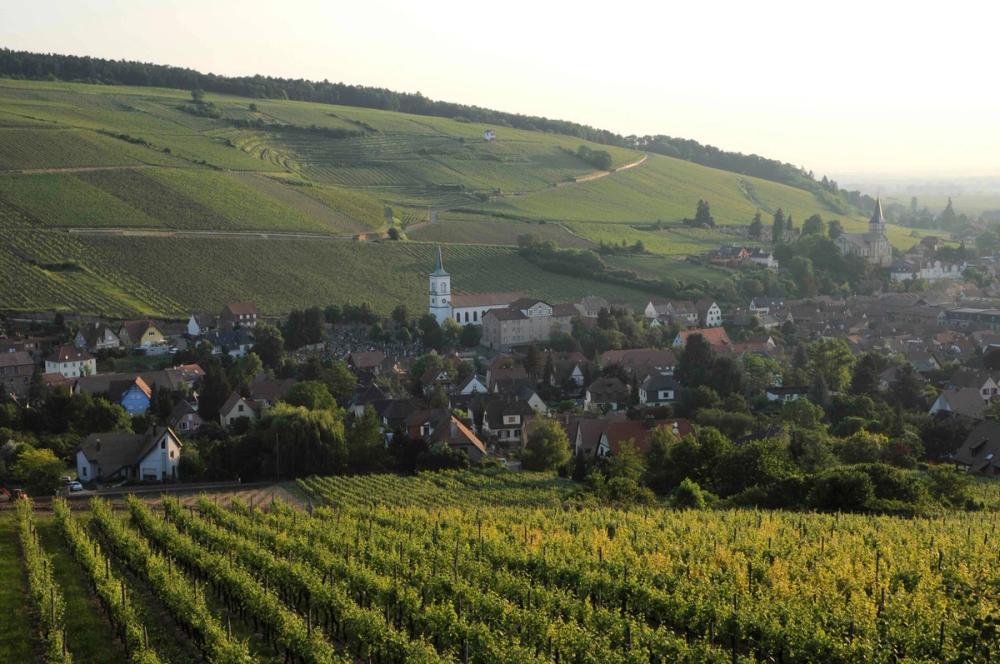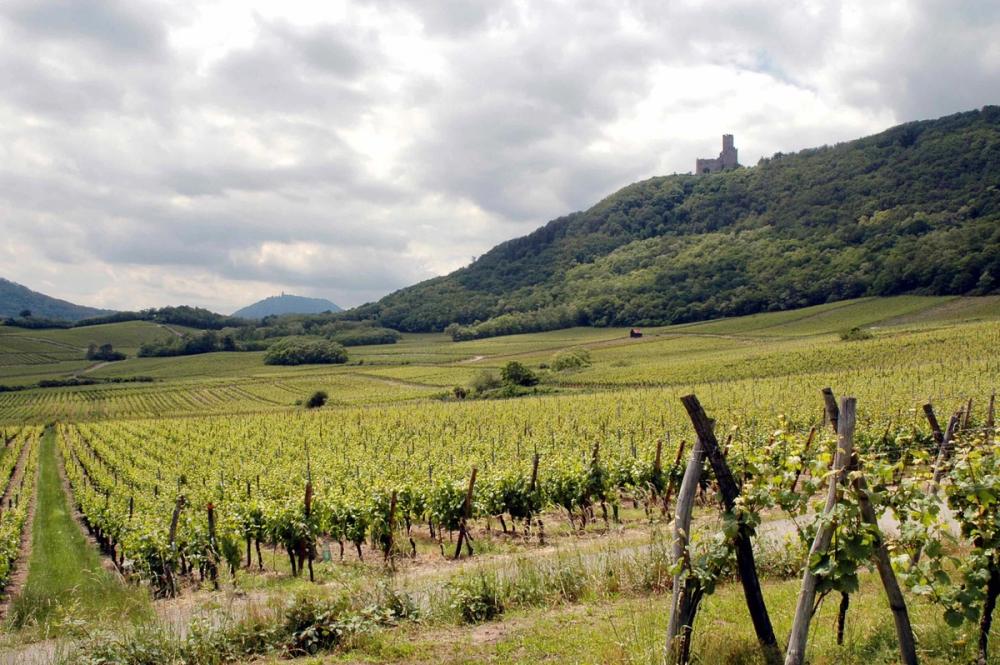The IWSC’s Alsace tasting with the Comité Interprofessionnel des Vins d’Alsace (CIVA) was carried out by Natasha Hughes MW, Rebecca Palmer, associate director and buyer at Corney & Barrow and Eric Zwiebel MS, an Alsace native who’s currently the director of wine at the Samling Hotel in the Lake District. Together the trio tasted 75 wines in order to come up with a shortlist of eight of the best from the region, all of which will be showcased at ProWein 2024.
Although Alsace is a relatively small viticultural region, its wines loom large in the minds of wine lovers around the world. They are admired as much for their stylistic diversity as they are for their food friendliness and their consistency of quality.
The diversity is easy to explain. The region boasts a portfolio of grapes that range from the subtle and textural pleasures of Pinot Blanc and Auxerrois to the opulent hedonism of Gewurztraminer and Muscat. Riesling, Sylvaner and Pinot Gris are shape shifters that can offer everything from elegant restraint to profundity and power. And then there’s Alsace’s red variety, Pinot Noir, the heartbreak grape, which rewards drinkers with its perfume and precision.
Marry these grapes with a region that boasts more sunshine hours each year than many more southerly appellations, incredible geological diversity and a landscape of hills and valleys, and you have a recipe for complexity and variety.

Part of the vineyards owned by Hugel – the esteemed Alsace producer
This is reflected in the range of styles created by Alsace’s winemakers. There are Crémants for your celebrations, easy-drinking wines for relaxed occasions and potent, structured wines for pairing with celebratory meals. And, of course, there are the terroir wines sourced from Grand Cru vineyards.
Alsatian Pinot Noir – 18 wines tasted

Alsace can offer a wide selection of still, white, sparkling and sweet wines
Alsace Pinot Noir has come on a long way in a few short years, with better levels of fruit ripeness and improved tannin management resulting in finer, silkier tannins in many cases. Although some producers still have a tendency to be rather too generous with their oak for this delicate red grape, the best wines showed a sensitivity in the way this component was integrated into the fruit.
Domaine Jean-Marc Bernhard, Pinot Noir Lieu-dit Vogelgarten, 2022. 13% abv.
This is an utterly charming Pinot, with beguiling flavours of bright red cherries and strawberries and a distinctive floral note. Light supporting tannins and a refreshing burst of acidity lend structure to the delicate palate.
La Cave du Vieil Armand, Pinot Noir, 2022. 13% abv. Although the palate is a little dominated by sweet spicy oak, there’s plenty of fruit density there to allow for this to integrate over time. The tannins are fine-grained, with just the right amount of grip. Worth cellaring.
AOC Crémant d’Alsace – 17 wines tasted

Frey Sohler vines
This was a very diverse category, with crémants ranging in style from approachable, fruit-led wines to more serious, long-aged wines with a pronounced autolytic character. As such, careful selection should help to provide the right crémant for a wide range of occasions.
Domaine Viticole de la Ville de Colmar, Cuvée 1895, Crémant d’Alsace, NV. 6g/l dosage, 12% abv. This 100% Chardonnay fizz is rounded and nutty with generous levels of ripe stone and citrus fruit, which is nicely counterpointed by subtle autolytic notes derived from the three years it spends ageing on lees in bottle. Nicely balanced and very easy to drink.
Frey-Sohler, Crémant d’Alsace, NV. 7.96 g/l dosage, 12% abv. The 20 months this wine spent ageing on its lees have endowed it with a fine mousse and some lively acidity, while the Riesling grape lends it intense notes of honeyed greengage plums and spiced pear.
Alsatian Riesling – 25 wines tasted

The Willms in their vines
For many, Riesling is Alsace’s foremost grape, and the wines tasted by the panel demonstrated exactly why the variety is so highly prized in the region. Although expressions ranged from the linear and taut to wines with opulent levels of ripe fruit, quality levels were consistently high and the panel agreed that it would have been easy to select at least twice the number of winning wines.
Willm, Riesling, Alsace Grand Cru Kirchberg de Barr, 2022. 4.75 g/l RS, 13.35% abv. Marl-limestone soil. Riper, with more overt stone and tropical fruit than you might typically expect from Riesling, but incredibly approachable, even in its youth.
Domaine Jean-Marc Bernhard, Riesling, Alsace Grand Cru Wineck-Schlossberg, 2021. 4 g/l RS, 13% abv. Granite soil. A racy, linear wine with cleansing acidity and very pure notes of lime and green apple tinged with orange zest and white blossom. Good depth and length.
Dopff au Moulin, Riesling, Alsace Grand Cru Schoenenbourg, 2018. 6.5 g/l RS, 13.8% abv. Marl soil. A mature wine with a balance of primary citrus notes and developed notes of honey and smoky kerosene. Good long finish.
Alsatian Gewurztraminer – 15 wines tasted
There was great stylistic consistency across the entire flight of Gewurztraminers, with all the opulence of fruit one would expect from the grape, but generally tempered by balance and freshness. The standout wine, though, was a mature dessert wine, which the panel felt demonstrated the grape’s strengths to best effect.
Hugel et Fils/Famille Hugel, Gewurztraminer, Vendanges Tardives, 2014. 94 g/l RS, 10.5% abv. Decadently rich, but showing precise balance of sweetness and bright acidity. A long finish, with plenty of ripe tropical fruit, tinged with a mature truffled character.
- The Comité Interprofessionnel des Vins d’Alsace (CIVA) Representing the winemakers producing and selling AOC Alsace wines, looks forward to welcoming international visitors to Hall 10 Stand E100 at ProWein 2023.
- You can find out more about the IWSC here.
































